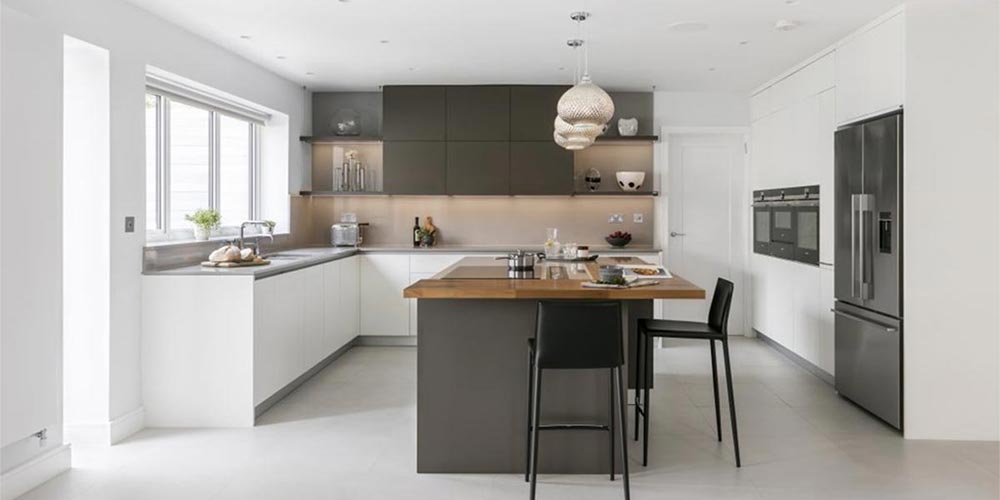
Running a kitchen showroom is about making good first impressions. When potential customers step into a welcoming atmosphere, they’re likely to stay longer and even make a purchase. Consequently, having a well-designed showroom is essential. If you’re new to the trade or haven’t planned a showroom for a while, then you might be at a bit of a loss when it comes to showroom design. Here you’ll find 6 things to keep in mind as you design your kitchen showroom.
Location
If you’re starting completely from scratch, odds are you need to pick a location. And if you’re considering relocating, think carefully before moving. Assess whether your showroom is accessible to your potential market. Are you near an industrial park or manufacturing area that doesn’t usually see much traffic?
Consider placing your showroom near busy shopping areas, where your customers might be browsing in stores for their homes. It’s also worthwhile to pinpoint your target demographic geographically and consider setting up shop nearby.
Flexibility
Another thing to keep in mind as you set out designing your showroom is the adaptability of the space. It should showcase your kitchen samples, obviously, but it’s also a place of business. You’ll need closing rooms and space for your staff to do their work when they’re not liaising with clients.
Choose a location that affords open kitchen floor plans as well. Open design concepts are popular among homeowners today, so your showroom should reflect that. You should also look for a space that has the capacity to change often – as new styles and trends come about you might change your samples from time to time.
Keep Samples Current
Indeed, current samples are a major selling point for showrooms. Avoid displaying products that you no longer carry or aren’t available. This will only frustrate the customer if they enquire about it and see you don’t have it.
Along with keeping displays up to date, you should also design them for functionality. Make real-world kitchen displays that show how the products might actually be used. Homeowners can more easily imagine their kitchen at home when they see these kinds of displays.
Another way to make the shopping experience easier for customers is to put our visual boards. With these, they can mix and match smaller samples of their favourite designs and textures to see what they like best. It’s also prudent to stock products at various price points. Not every customer will have the same budget, so having a wide selection available will also be more appealing.
Promote Your Brand
If “promoting your brand” sounds too sales-y, then think of it as differentiating yourself. Focus on what makes your showroom and your company unique. Have a personality that customers can empathise with; don’t be just another showroom they shop at.
Make it clear to potential customers what the advantages are of working with you. Explain the process you take customers through when they buy a kitchen from you – they’ll appreciate the organisation and transparency greatly. Furthermore, use digital channels like social media or your own website to reach a wider audience.
Kitchen Design Software
Another great way to design your showroom that will optimise your customers’ experience is with software or new technology. There are many tools today which allow you to create 3D renderings of kitchens, for a quick mockup to show clients. Other tools use augmented reality to let customers impose products they like over your displays.
Software like these can enhance a kitchen showroom that’s already expertly designed. They also allow you to take the customer experience one step further, making their shopping more convenient and personalised.
Customer Engagement
One final thing that goes hand-in-hand with the design of a showroom is your engagement with the customer. If you’re unfriendly or unknowledgeable, your showroom’s design won’t you do you much good. Always greet your clients as they come in and make yourself available to answer questions.
Other ways to make customers feel more comfortable is installing seating areas or offering free beverages. Clients may end up spending a lot of time inside a showroom, so these small amenities will make their shopping experience more manageable.
Final Thoughts
Keep in mind that the time, planning, and money that go into your showroom are an investment. If you’re of the mindset that quickly putting together some displays without attention to finer details or customer experience is enough, then you’d be mistaken. At our kitchen showroom in North London Multiliving, we incorporate all of these aspects into our showroom design and management. When you design a top-notch showroom, you’ll have top-notch results.
